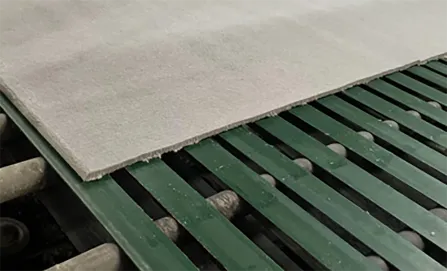Oct . 07, 2024 06:37 Back to list
mineral fibre board ceiling vs gypsum board
Comparing Mineral Fibre Board Ceiling with Gypsum Board
In the realm of interior construction and design, ceiling materials play a crucial role in not only aesthetics but also functionality and performance. Two popular choices are mineral fibre board ceilings and gypsum boards. Each material has its unique features, advantages, and drawbacks, making them suitable for different applications. This article explores these two options, helping you decide which might be best for your specific needs.
Mineral Fibre Board Ceilings
Mineral fibre boards are composed of natural and synthetic fibers, typically including recycled materials, providing a sustainable option for ceiling installations. They are known for their exceptional sound absorption properties, making them particularly beneficial in environments where noise reduction is a priority. Schools, offices, and hospitals often employ mineral fibre ceilings to create quieter spaces conducive to productivity and comfort.
Additionally, mineral fibre boards are highly resistant to moisture and are suitable for areas with high humidity levels, such as kitchens and bathrooms. Their ability to withstand moisture minimizes the risk of mold growth, making them a healthier choice for indoor air quality. Furthermore, mineral fibre boards come in various designs and finishes, allowing for versatility in interior design.
On the downside, mineral fibre ceilings can be less durable than their gypsum counterparts. They are prone to sagging over time, especially in environments with extreme temperature fluctuations. Moreover, while they do possess fire-resistant properties, they are not completely fireproof, which could be a consideration depending on the application.
Gypsum Board Ceilings
mineral fibre board ceiling vs gypsum board

Gypsum boards, also known as drywall, consist primarily of gypsum plaster sandwiched between two sheets of heavy paper. They are widely used in residential and commercial settings for their ease of installation and finishing. One significant advantage of gypsum board ceilings is their excellent fire resistance, making them a preferred choice for areas where fire safety is a priority.
Gypsum boards are highly rigid and less susceptible to sagging over time, offering a long-lasting solution for ceiling applications. They can also be easily painted, decorated, or textured to meet aesthetic preferences. In terms of cost, gypsum boards are often more budget-friendly, making them a popular choice for large-scale projects.
However, gypsum boards are not as effective as mineral fibre boards when it comes to sound insulation. They can transmit noise more easily, which may be a drawback in certain environments where sound control is important. Gypsum boards are also less moisture-resistant, making them unsuitable for high-humidity areas unless properly treated or installed with additional protective measures.
Conclusion
Ultimately, the choice between mineral fibre board ceilings and gypsum board ceilings depends on the specific needs of your project. If sound absorption and moisture resistance are high on your priority list, mineral fibre boards are likely the better option. They provide a sustainable and aesthetically pleasing solution that enhances indoor acoustics.
Conversely, if fire resistance and structural durability are more important, gypsum board ceilings may be the way to go. They offer a reliable, cost-effective solution that can be easily customized to fit various design preferences.
In summary, both materials have distinct advantages and drawbacks. Understanding the specific requirements of your space will guide you in making an informed decision that aligns with your aesthetic and functional goals. Whether you lean towards the acoustic benefits of mineral fibre or the durability of gypsum, choosing the right ceiling material will greatly enhance the overall ambience and safety of your environment.
-
Durable Ceiling T Grid Systems | Easy InstallationNewsAug.29,2025
-
PVC Gypsum Ceiling: Durable, Laminated Tiles for Modern SpacesNewsAug.28,2025
-
Pvc Gypsum Ceiling Is DurableNewsAug.21,2025
-
Mineral Fiber Board Is DurableNewsAug.21,2025
-
Ceiling Tile Clip Reusable DesignNewsAug.21,2025
-
Ceiling T Grid Modular DesignNewsAug.21,2025







